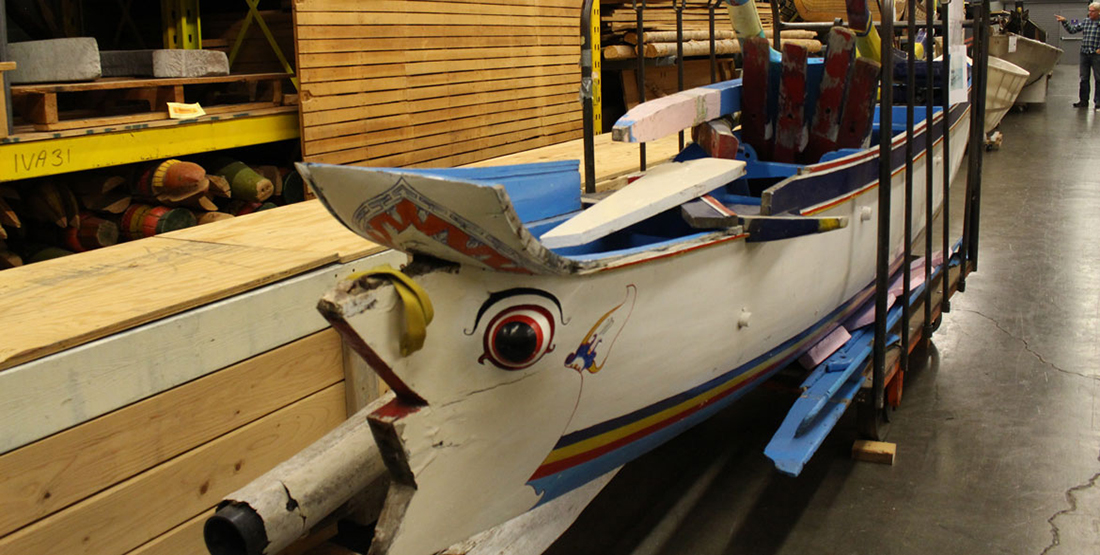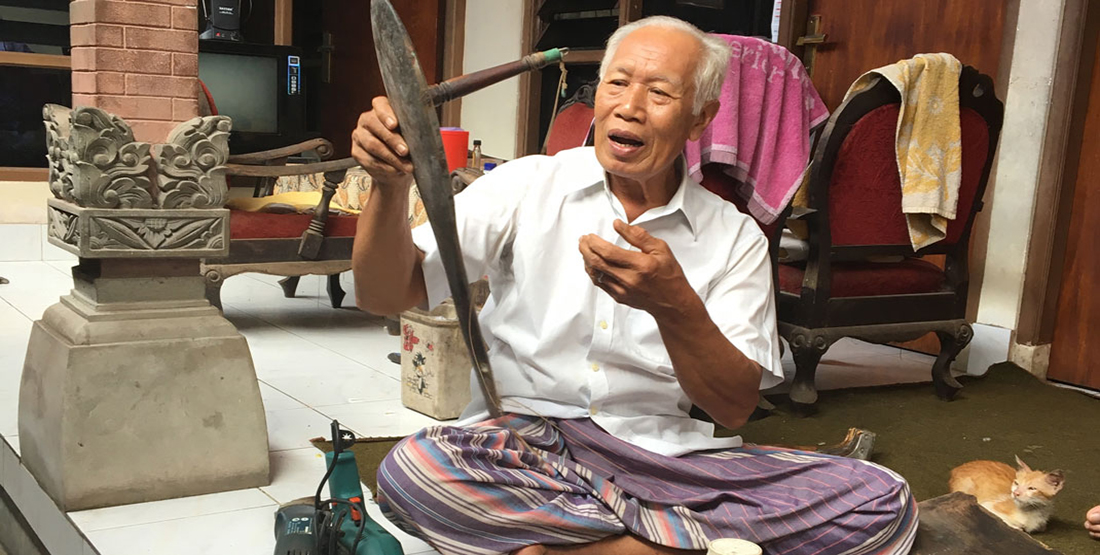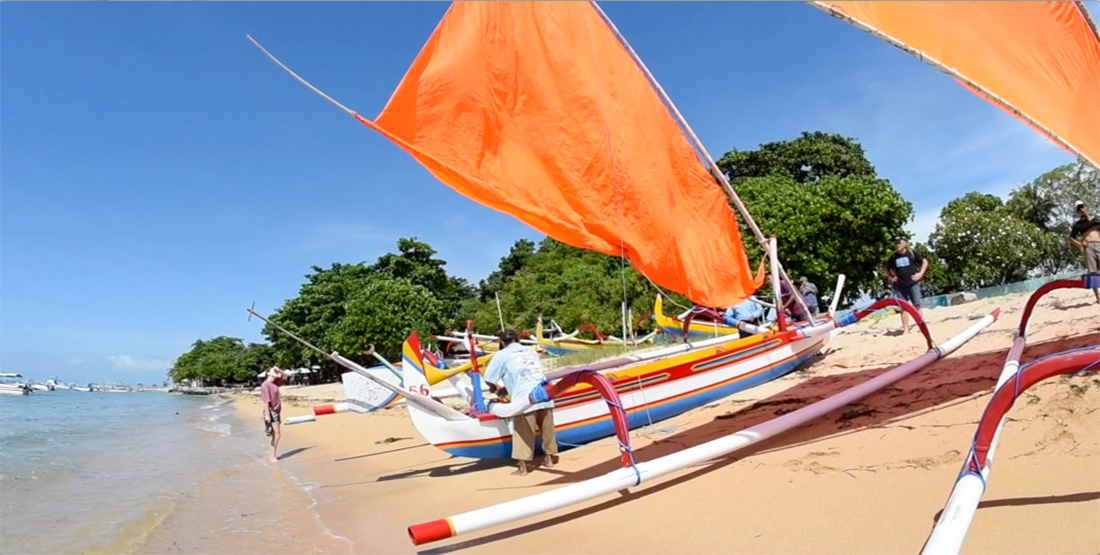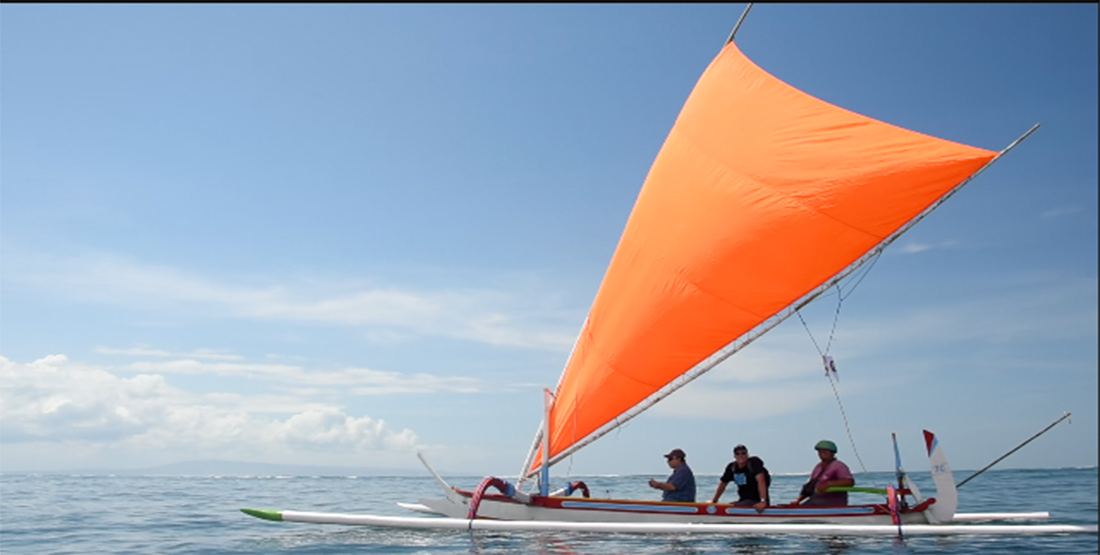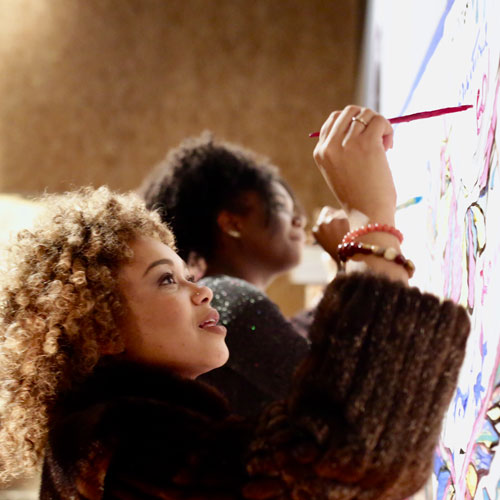Eventually the jukung made its way to the Burke Museum collection where Peter Lape, Burke Museum Curator of Archaeology, took interest in learning more about the origins of this mystery boat—especially because jukung are disappearing from living tradition in Bali. For the past several years, he has been searching for insights into the Burke’s jukung as a side project during trips to Indonesia for archaeological research.
In spring 2017, Peter traveled to the fishing village of Kusamba in Indonesia along with fellow Burke Museum curator Sven Haakanson, University of Washington (UW) anthropologist Celia Lowe, and Alfred Naumoff, an expert traditional kayak builder from Kodiak Island, Alaska.
They spent two days learning about boatbuilding tools, wood sources, and fishing methods as part of an effort to understand the history of boatbuilding in Kusamba alongside jukung builder Mohamad Bakri. With the help of Mr. Bakri, they were able to learn more about the Burke jukung’s construction and the ingenuity and traditions that influenced its design.
Alfred Naumoff shared his knowledge of traditional kayak building and paddling with their Balinese hosts. Even though Bali and Kodiak Island, Alaska, are thousands of miles apart, the two boatbuilding and fishing traditions share some things, such as an emphasis on carving, lashing and tying technology. In addition, there is a shared desire to pass on the knowledge of these experts to the next generation.
The Kusamba trip answered vital questions about the jukung in the Burke Museum’s collection. For the Burke, and especially Peter, this boat gives important insights into boatbuilding traditions in Indonesia’s history.
Learn more about reviving the jukung, and see more from Culture.
